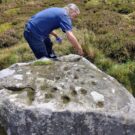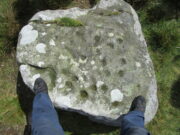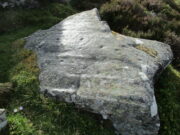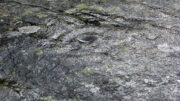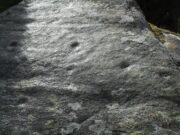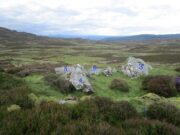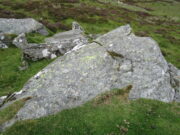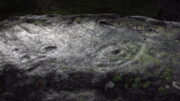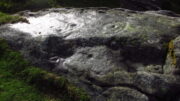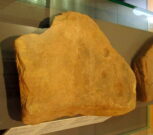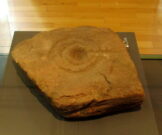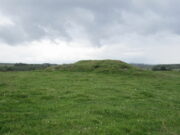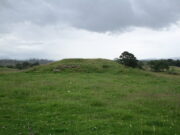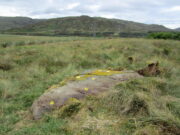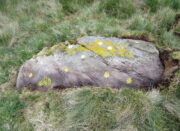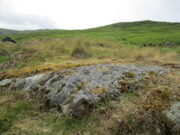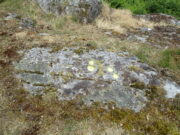Cup-Marked Stone (missing): OS Grid Reference – SE 1687 3868
Archaeology & History
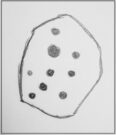
This carving was originally located somewhere close to the old disused Brackenhall Mills on the edge of Thackley, just before you drop down to Thackley tunnel. It was uprooted sometime in the 1950s and taken several miles away to the Cartwright Hall Museum at Manningham, Bradford, where it sat outdoors behind some fencing for many a-year, accompanied by the large fossil of an ancient tree.
I first saw it there when I lived close by in 1981, in the days before I had such a thing as a camera. Hence I only have this scruffy old sketch of the design, which I did without adding any notes to help remind me which carving it was! So this sketch has sat, all-but-forgotten, on a scrap of paper since then, until I recently sussed out which carving it was!
The stone itself was akin to a very large portable rock, with a simplistic design consisting of at least nine cup-marks cut into one of the rounded faces. One account of the stone suggested there may have been a possible incomplete ring around one of the cups. When I went back to see the stone about 20 years ago, it had gone. So I called into the adjacent museum to inquire what had become of it. The curator (or whoever it was) that I spoke with told me that the stone had been put into a box and placed in the cellars, but refused to let me see it. I asked to make an appointment to see the stone and he refused that too. It has not been seen since. Does anyone know what’s become of it?
References:
- Keighley, J.J., “The Prehistoric Period,” in Faull & Moorhouse’s, West Yorkshire: An Archaeological Survey to AD 1500 (WYMCC: Wakefield 1981).
- Yorkshire Observer, January 17, 1953
© Paul Bennett, The Northern Antiquarian
